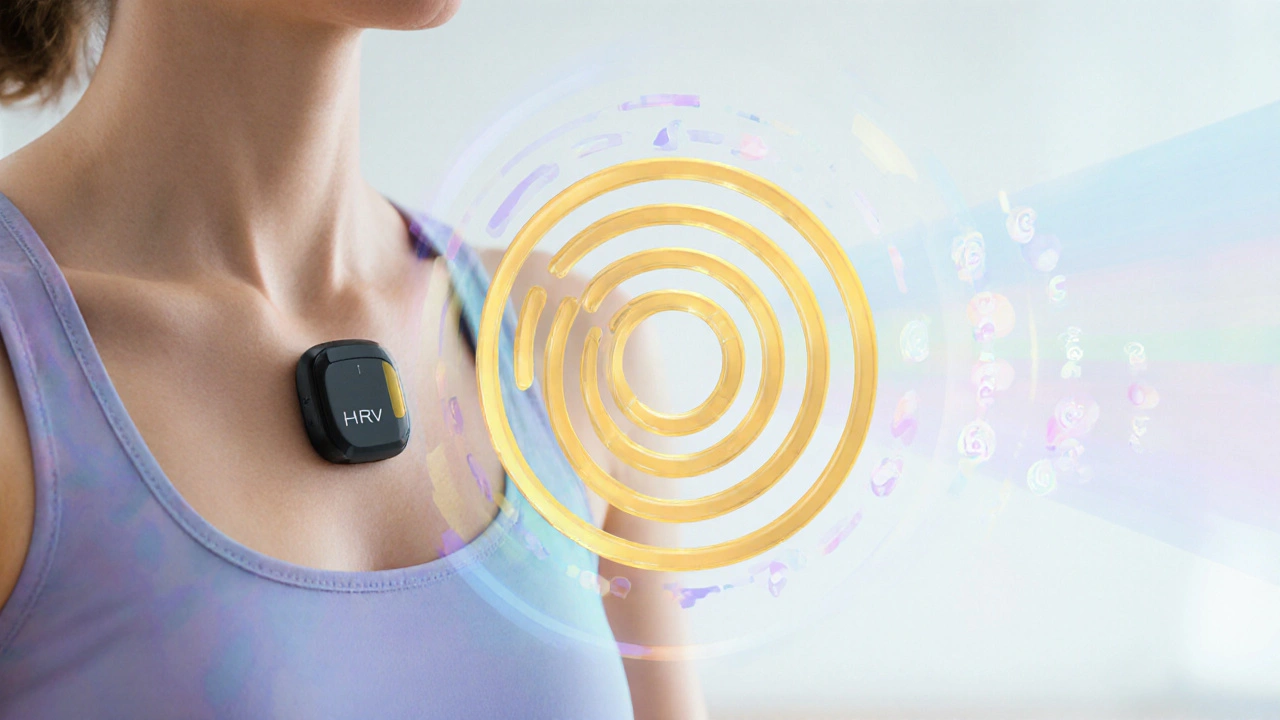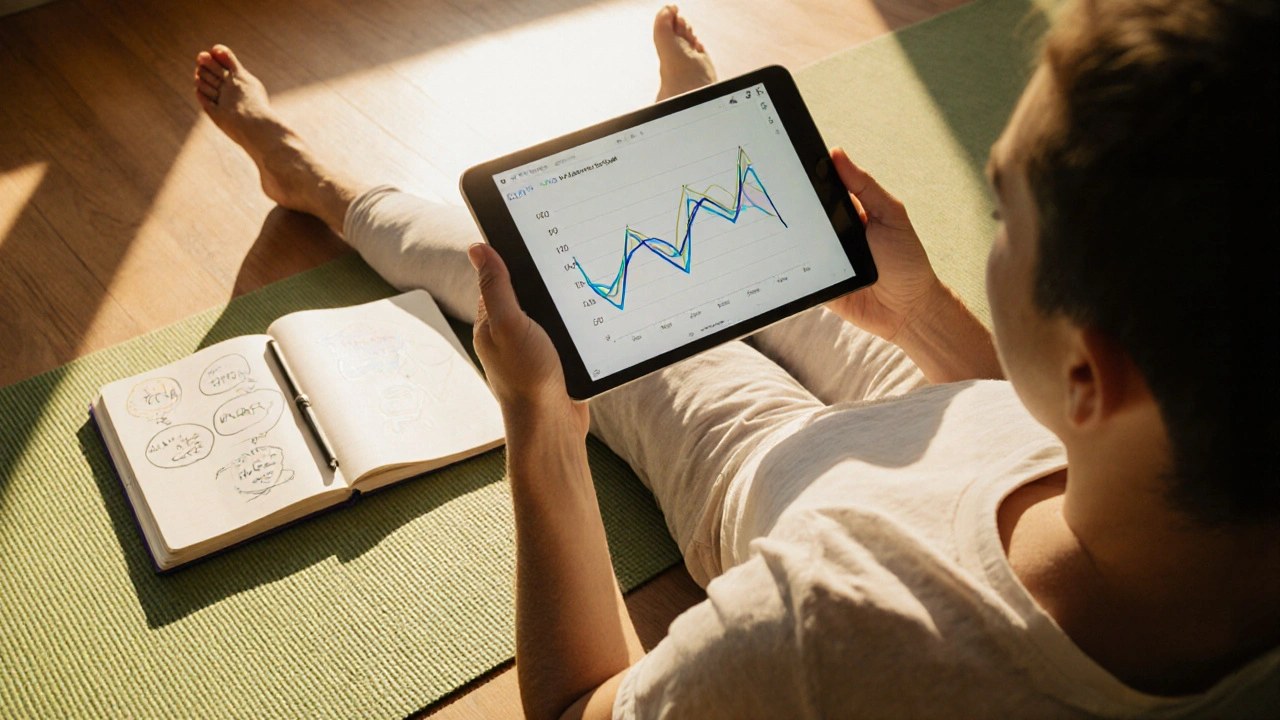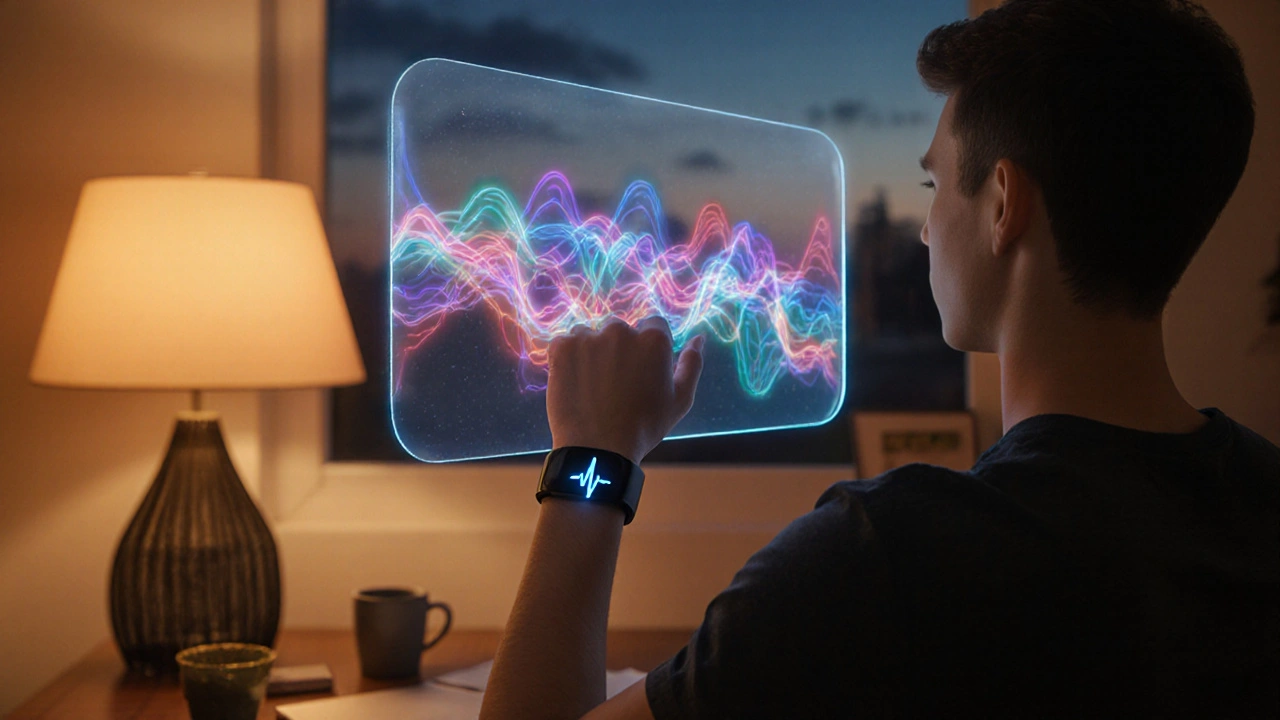Feeling trapped by anxious thoughts? Imagine being able to see your body’s stress signals in real time and gently coax them back to calm. That’s the promise of biofeedback - a hands‑on tool that turns invisible nervous‑system activity into something you can actually manage.
Key Takeaways
- Biofeedback teaches you to control physiological cues like heart rate, muscle tension, and brain waves.
- HRV (heart‑rate‑variability) training is the most evidence‑backed method for anxiety relief.
- Wearable devices make home practice easy, but professional sessions provide faster skill acquisition.
- Combine biofeedback with CBT or relaxation training for lasting change.
- A clear step‑by‑step plan helps you start without feeling overwhelmed.
What Is Biofeedback?
Biofeedback is a non‑invasive technique that measures bodily functions-such as heart rate, skin conductance, muscle activity, or brain waves-and feeds that data back to the user in real time. By watching a simple screen or hearing a tone, you learn to tweak the underlying response, gradually gaining voluntary control over what used to be automatic.
Why It Matters for Anxiety
Anxiety is a state of heightened arousal triggered by perceived threats, often accompanied by rapid heartbeat, shallow breathing, and muscle tension. Traditional talk therapy helps reframe thoughts, but it doesn’t directly address the physical surge that fuels worry. Biofeedback bridges that gap by letting you dial down the physiological storm before thoughts spiral.
Common Biofeedback Modalities for Anxiety Relief
Each modality monitors a different signal. Choose the one that matches your symptoms and lifestyle.
Heart‑Rate‑Variability (HRV) Biofeedback
Heart Rate Variability measures the variation in time between successive heartbeats, reflecting the balance between the sympathetic and parasympathetic nervous systems. Higher HRV indicates better stress resilience. During a session you breathe in sync with a visual pacer, training your vagus nerve to boost calm.
EEG Neurofeedback
Neurofeedback records brain‑wave activity via scalp electrodes and displays it as a moving bar or game. By rewarding slower alpha waves and reducing high‑frequency beta spikes, you can quiet racing thoughts that feed anxiety.
EMG (Muscle‑Tension) Biofeedback
EMG detects electrical activity generated by skeletal muscles, especially in the neck, shoulders, or jaw. When tension spikes, the device flashes red, prompting you to relax through progressive muscle relaxation or gentle stretching.
Skin Conductance (Galvanic Skin Response)
Skin conductance rises with sweat gland activity, a direct output of the sympathetic nervous system. Seeing a rising line can trigger a pause for a calming breath, helping you intercept panic before it escalates.

Choosing the Right Method
Not every approach fits every person. Consider these criteria:
- Primary symptom:** Is your anxiety more mental (racing thoughts) or physical (tight chest, trembling)?
- Budget:** Wearable HRV sensors cost $100‑$200, while EEG neurofeedback often requires weekly visits costing $70‑$150 per session.
- Time commitment:** EMG and skin‑conductance can be practiced in 5‑minute bursts; neurofeedback usually needs 20‑30 minutes.
- Tech comfort:** Some prefer a simple wristband; others enjoy a game‑like EEG interface.
For most beginners, HRV biofeedback offers the best blend of evidence, affordability, and ease of use.
Practical Steps to Get Started
- Pick a modality. If you’re unsure, start with a basic HRV wearable (e.g., chest strap or finger sensor).
- Set up a quiet space. Turn off distractions, dim the lights, and have a comfortable seat.
- Learn the breathing rhythm. Aim for a 4‑7‑8 pattern: inhale 4seconds, hold 7seconds, exhale 8seconds.
- Run a baseline session (5minutes) and note the average HRV score.
- Use the app’s graph to see where you start.
- Practice daily for 10‑15minutes, gradually extending to 20minutes as control improves.
- Log your mood after each session. Over weeks, you’ll see a correlation between higher HRV numbers and lower anxiety ratings.
- If progress stalls, add a complementary technique:
- Combine with Cognitive Behavioral Therapy to reshape anxious thoughts while you train your body’s response.
- Pair with Relaxation Training such as guided imagery or progressive muscle relaxation for deeper calm.
Pros, Cons, and Common Pitfalls
- Pros: Immediate feedback, measurable progress, non‑pharmacological, can be self‑administered.
- Cons: Requires consistency, initial learning curve, some devices need calibration.
- Pitfalls: Relying solely on the device without addressing thought patterns; neglecting regular practice; choosing a modality that feels too technical and abandoning it.

Comparison of Popular Biofeedback Options
| Method | Primary Signal | Typical Device | Best For | Cost (USD) |
|---|---|---|---|---|
| HRV Biofeedback | Heart‑rate variability | Chest strap or finger sensor with app | Physical symptoms, beginners | $100‑$200 (one‑time) |
| EEG Neurofeedback | Brain‑wave patterns (alpha/beta) | Headset with dry electrodes | Racing thoughts, chronic anxiety | $70‑$150 per session |
| EMG Biofeedback | Muscle electrical activity | Surface electrodes on neck/shoulder | Muscle tension, migraine‑related anxiety | $150‑$300 (setup) |
| Skin Conductance | Sweat gland activity | Finger clip sensor | Acute panic spikes | $80‑$120 (device) |
Frequently Asked Questions
Can biofeedback replace medication for anxiety?
For many people, biofeedback serves as a powerful supplement rather than a full replacement. It can lower the dose needed for medication, but you should always discuss changes with a healthcare provider.
How long before I notice results?
Most users report a noticeable calm after 2‑3 weeks of daily 10‑minute sessions. Consistency is key; sporadic practice delays progress.
Is biofeedback safe for people with heart conditions?
HRV training is generally safe, but anyone with arrhythmia or pacemaker should get clearance from a cardiologist before starting.
Do I need special software to view my data?
Most consumer devices bundle a free companion app that graphically displays real‑time metrics and stores historical trends.
Can children use biofeedback for anxiety?
Yes, especially EMG and simple HRV games designed for kids. Parental supervision ensures the sessions stay short and fun.
Next Steps
Pick a starter kit, schedule a 30‑minute trial with a certified practitioner, and track your HRV scores for a month. If you notice steady improvement, layer in CBT worksheets or a guided meditation routine. The magic of biofeedback isn’t in a gadget-it’s in the habit of watching your body, learning its language, and gently steering it toward calm.






